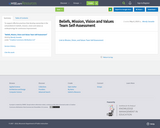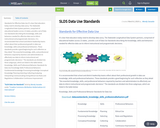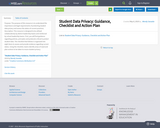
To support effective practices that develop ownership in the school/district’s beliefs, mission, vision and values as underpinnings for continuous improvement.
- Subject:
- Education
- Material Type:
- Other
- Self Assessment
- Date Added:
- 05/08/2018

To support effective practices that develop ownership in the school/district’s beliefs, mission, vision and values as underpinnings for continuous improvement.

Standards for Effective Data Use
It’s clear that educators today need to develop data savvy. The Statewide Longitudinal Data System partners, comprised of educational leaders across 13 states, provide a set of Data Use Standards describing the knowledge, skills and behaviors needed for effective data use to inform instructional and programmatic decisions.
It is recommended that school and district leadership teams reflect about their professional growth in data use knowledge, skills and professional behaviors. These standards provide a good beginning for such reflection as they detail “the essential knowledge, skills, and professional behaviors required by teachers and administrators to effectively use data to inform instructional and programmatic decisions.” The standards are divided into three subgroups, which are listed in the table below:
Knowledge, Skills and Professional Behavior Standards for Data Use
Knowledge
Skills
Professional Behaviors
Fundamental Knowledge
Processing Knowledge
Conceptual Knowledge
Planning
Selecting
Collecting
Analyzing
Interpreting
Communicating
Acting
Ethical Use
Rules and Regulations
Collaboration
Continuous Improvement

Purpose:
The purpose of this resource is to understand the importance and legal requirements of protecting student data privacy and assess the status of current practices.
Description:
This resource is designed to be utilized collaboratively by district leadership teams and reinforced by school leadership teams. First, you will find guidance regarding policies, principles and protocols critical to protect student data. The checklist that follows is organized into eight items to assess and provide evidence regarding current status. Using the checklist, teams identify areas of need and plan actions to be taken to insure student privacy.